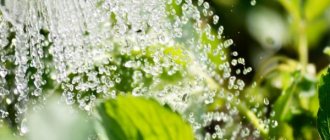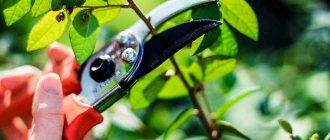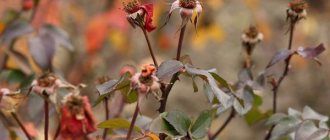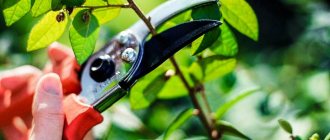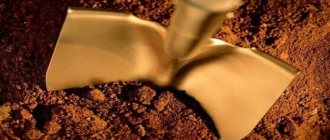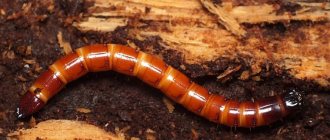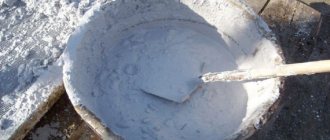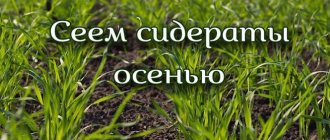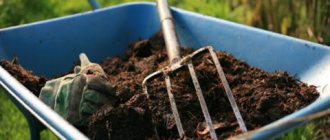Autumn care for raspberries
Raspberry is a perennial deciduous subshrub of the Rosaceae family. Both in the wild and in the garden, this unassuming crop grows and bears fruit even in the shade, along the fence.
However, caring for raspberries is not as easy as it seems. You need to tinker with the raspberry plant, create favorable conditions for growth and fruiting.
Early autumn
are cut out in September . Apply mineral or organic fertilizers.
Raspberries are treated with Bordeaux mixture. The drug contains copper sulfate and gypsum, the suspension adheres well, is slowly washed off, and acts as a fungicide.
Autumn spraying of raspberries is carried out on the leaves from top to bottom so that all shoots turn bluish. Treatment is also carried out in the tree trunk area.
Late autumn
At the end of the season, young shoots are carefully bent to the ground and fixed so as not to damage the stems. In winter, the raspberry tree will be covered with snow. Snow cover will protect the shoots and root system from freezing.
Pruning raspberries in autumn
Raspberries are pruned several times a season; let’s look at ways to thin out plantings.
Regular
At the end of August, the raspberries have already yielded their harvest; it’s time to clean them and prepare them for winter. Renewal shoots have grown, old ones are beginning to fade. Be sure to cut out weak, diseased or dry growth.
Pruning helps the root system redistribute nutrition and concentrate on strong shoots. Raspberries need to be thinned out; dense plantings are a source of disease.
Attention! 10-12 renewal shoots are left per 1 linear meter.
Double pruning (Sobolev method)
Some gardeners recommend using Alexander Sobolev's method of double pruning raspberries .
1 step. Time: end of May - beginning of June. The tops of annual shoots are cut off when they gain strength and grow more than 60-80 cm. Accordingly, the lateral shoots on the main trunk are activated. Pruning is carried out on all branches.
As a result, the bush does not stretch in height and develops fully due to the uniform distribution of load and nutrition.
Attention! The bushes are no longer pruned; in this state they go to winter.
Step 2. The procedure is carried out during the period when the leaves bloom. Next spring, cut off the tops of the side shoots, 5-15 cm.
The secondary shortening procedure gives rise to the growth of second-order shoots. It is on them that flower buds are laid. The result is an increase in productivity, while the berries on the branches are arranged compactly.
For shortening
In the spring, along with sanitary pruning of dry and damaged stems, healthy shoots are shortened, the optimal length of branches is up to 1-1.5 m. The top is cut to the level of a healthy bud.
This gives a start to the growth of side stems. Already next season you can expect a good increase in fruit-bearing shoots.
Preparing the plant for winter
Preparing raspberries for winter consists of several important activities:
How to process raspberries in the fall
- Shoots intended for cutting are removed at the root.
- In annuals, the tips are shortened by 1/3 of the height.
- The raspberry tree is thinned out to an optimum of 8-11 stems per 1 square meter.
- The soil is thoroughly cleaned, trimmed parts of the plant, leaves, and small branches are burned.
- Leaves that have not fallen are removed by lightly stroking your hand along the stem.
- In areas with little snow, it is recommended to bend the stems to the ground to a level of 10-15 cm from the surface.
- When snow falls, a snowdrift falls on the bushes.
Raspberries are very unpretentious in nature; when developing new varieties, the most resistant to pests, diseases and climate change were taken. For successful cultivation, it is worth considering not only external and taste data, but also paying attention to the level of acclimatization in a certain area. In this case, minimal effort will be required to prepare the plant for winter.
If you follow the deadlines for autumn work and carefully follow all recommendations for fertilizing, watering and pruning technology, raspberries will successfully survive the winter cold and will again delight you with a bountiful harvest.
Feeding with fertilizers
Year-round care and nutrition increase crop productivity, strengthen the immune system and protect against diseases and viruses.
Starter fertilizers
When planting in a trench or hole under raspberries, apply the following fertilizers:
- ammonium nitrate - up to 20 g per bush;
- azofoska or nitroammofoska - complex NPK complex (16:16:16) - 30-40 g per 1 seedling;
- additions of boron, zinc and copper are applied simultaneously with basic mineral fertilizers.
Feeding raspberries in winter
Already at the end of summer, in August, you need to pay attention to the raspberries. The nutrient supply in the soil is almost exhausted, the raspberry bushes have wasted a lot of energy. The main thing is not to skip the autumn feeding of raspberries, otherwise you may be left without a harvest.
In the first ten days of August 1-5 and 2 weeks later on August 15-20, it is important to feed raspberries
with mineral fertilizers:
- potassium sulfate - potassium (52%) and sulfur (18%) will protect plants from the upcoming cold weather and ensure the formation of fruit buds in the next season. The irrigation solution is prepared in the proportion of 1 tbsp. l. drug per 10 liters of water ;
- superphosphate extract - 10 tbsp. l. fertilizers per 10 liters of water ; if you fill it with hot water, the hood is ready in a day; if it’s cold, the solution is infused for at least 72 hours (3 days).
Features of feeding different types of raspberries
All varieties and raspberry-blackberry hybrid varieties of raspberries require basic nutrition and additional feeding:
- organic fertilizers are applied to the soil before planting;
- the soil is also limed before planting;
- nitrogen is necessary for the development of shoots, potassium and phosphorus - for abundant fruiting;
- mineral complexes are used directly when planting bushes;
- subsequently, organomineral mixtures are used as root fertilizers.
Feeding remontant raspberries
Remontant raspberries have become popular among gardeners in recent years. Autumn pruning of individual fruit-bearing shoots and pruning of annual branches is not necessary .
The peculiarity of cultivation is quick and easy care after harvesting; the above-ground part is completely mowed.
Reference. Remontant raspberries are special varieties (Heritage, Diamond, Primara) of the crop that bear fruit on annual and biennial shoots.
This species bears fruit only at the end of summer. It is characterized by high yields and resistance to pest damage.
In mid-summer, the raspberry plant experiences a deficiency of nutrients - the plant blooms and berries form. During this period, it is important to feed the bushes with mineral fertilizers. Experienced gardeners use complex mixtures to ensure high yields.
Recipe for Green solution for foliar treatment of raspberries
The mother liquor is diluted in 2-2.5 liters of hot water:
- metal utensils are not used due to copper-containing preparations;
- Dissolve 50 g of iron sulfate in hot water;
- add 100 g of copper sulfate;
- 10 g of citric acid (to convert iron into chelate form);
- 100-150 g of dry pressed yeast, can be replaced with the drug Rostmoment, 100 g, based on yeast - a growth and development regulator;
- organomineral fertilizer Fitaktiv Vita, a powerful concentrate, NPK-complex with microelements and vitamins, add according to the instructions in proportions per 12 l; can be replaced with another complex liquid fertilizer, for example, Belvito.
The working solution is prepared based on 12 liters of water:
- Bring the mixture to 12 liters of water;
- to stir thoroughly;
- store the prepared solution for 5-7 days in a cool place without access to direct light;
- The green mixture gradually gives a precipitate (iron and copper phosphates, yeast), stir the solution immediately before processing;
- When using a sprayer, strain the mixture.
Raspberries are processed during the flowering period, at the beginning of fruiting.
Complex effects of the Green mixture:
- prevention of infectious and viral diseases during the active growth stage of the culture (chlorosis);
- fungicidal treatment against fungal infections (purple spotting);
- insecticidal effect, the repellent solution serves as a repeller of harmful insects; at the same time, it is safe for raspberry pollinators (bees, bumblebees);
- parallel introduction of mineral compounds - nutrition, activation of protective functions and strengthening of phytoimmunity;
- yeast – hormonal stimulation of growth, flowering, absorption of mineral components;
- safe composition (without heavy chemicals) ensures a healthy harvest without harm to health and the environment.
Feeding black raspberries
Black raspberries are a combination of blackberries and raspberries; according to their biological characteristics, this berry is classified as a blackberry; in structure it is closer to raspberries. The synonymous name for the exotic crop is chokeberry .
The peculiarity of the plant is that the stems of black raspberries are curved, strong, covered with hard thorns, and stretch up to 2.5-3 m in height.
Fact . Aronia raspberries contain ellagic acid, a polyphenolic compound, a natural antioxidant that resists the formation of cancer cells.
When planting, a nutritious dressing is placed in the planting hole:
- wood ash;
- humus or compost;
- sand as a leavening agent;
- The components are mixed in a ratio of 1:1:1.
At the end of August or in September after harvesting, an organomineral mixture (based on 1 sq. m of raspberries):
- 1-1.5 buckets of humus or compost;
- 25-30 g of potassium salt;
- up to 50 g of superphosphate;
- lime or chalk (for acidic soil).
Pre-winter chores
Preventative treatment
In winter, raspberries should leave clean and healthy. All plant debris (fallen leaves, stem cuttings, weed debris) should be raked and burned, and then the stems should be sprayed with fungicides. If there is nothing wrong with the raspberries, Bordeaux mixture is enough. During this period, use a 3% solution, abundantly irrigating all the bushes with it.
In the fall, in the raspberry garden you can use strong, 3%, or even more, solutions of Bordeaux mixture
If there were numerous pests in the raspberry field, treatment against them should be repeated now. You can use any approved insecticides, for example, Aktaru or Allegro.
Sheltering raspberries for the winter
Most raspberry varieties are frost-resistant, and require serious winter shelter only in harsh climatic regions, especially in the case of snowless winters. The best shelter is snow, so it is important to create conditions so that it does not blow away from the plantation, but rather covers the bushes.
Each gardener decides for himself how easier it is to technically bend the shoots to the ground. It is important not to break them: at low temperatures they are especially fragile. The bent shoots are tied together, or better yet, tied to small pegs driven into the ground.
It is imperative to bend down shoots in late autumn, and cover them only in snowless and cold regions
If the snow can be blown away by the winds, it is worth protecting the raspberry tree with shields. Anything that holds back gusts of wind is suitable. If it is known that snow falls late and there is little of it, it is better to cover the connected bunches of shoots with non-woven material. Instead, you can use coniferous spruce branches. It is important to install the shelter on time: constructing it too early is fraught with damping off of the bushes, and later - freezing. It is necessary to remove the shelter in time in the spring: no later than the beginning or middle of April.
How to mulch raspberries
Mulch is a surface protective layer. Proper mulching not only preserves moisture and protects from cold, but also provides additional nutrition to the soil and root system.
The rhizomes of perennial raspberries are susceptible to frost; in the fall, mulch serves as a layer of insulation, retains moisture, and provides air access.
Important: the organic base of the mulch layer must be neutral in acidity ; raspberries do not tolerate alkaline or acidic environments.
For autumn mulching of raspberries use:
- peat - can be placed on top of the snow in a layer of 7-10 cm;
- sawdust - during the decomposition process they form humus, sawdust is poured into a hill under each bush (up to 12 cm in height);
- compost is a safe method of covering material in cold regions; in warm climates, the lower branches can be supported; the optimal layer size is up to 5 cm;
- straw - a covering layer of 10-12 cm will protect the root system from cold, wind and temperature changes;
- rotted litter - a layer is laid out evenly at the base of the stems.
Attention! A layer of mulch is poured after applying fertilizer; The optimal time for mulching is that the length of new shoots reaches 30 cm.
Simple ways to mulch raspberries in spring:
- sunflower husk – a lightweight organic material, protects roots from overheating and temperature changes, does not compact the soil, mulch layer – up to 6 cm;
- a mixture of straw and manure is an ideal mulch for young bushes, laid in a layer of up to 7-8 cm;
- rotted twigs, chips and shavings - slowly decomposing organic matter, crushed material that remains after pruning; a thick layer (up to 10 cm) nourishes the soil, protects against weeds, retains moisture and heat.
Forming the correct row
Summer residents from the southern regions of the country should form the correct row in the autumn. Raspberries should be planted when a root bud appears. There should be a distance of 70 cm between plants, from one row to another over one and a half meters.
In the case of trench planting, posts are installed along the perimeter of the entire row. A wire is attached to them, a meter from the ground. The branches are tied at a distance of a decimeter from each other.
Humus and ash are added to the hole before planting. If the raspberries will form into bushes, then two plants are planted in one hole at a distance of 12 cm from each other. All raspberry roots should face down. For planting, annual shoots, cuttings prepared after leaf fall and shoots from the nursery are used.
Autumn control of pests and diseases of raspberries
Raspberries, as a rule, are located on the site in one place for many years. During this time, pathogens and pests accumulate in the soil.
In the fall, after the remontant raspberries bear fruit, all branches are cut off at the root. The stems are taken outside the site to get rid of the breeding ground for infection.
In the spring, as soon as the young shoots begin to grow, you urgently need to treat the raspberry bush.
It is important to form a row correctly - no more than 20 shoots are left per linear meter for good air ventilation and reduce the risk of activation of pathogenic flora.
The threat to raspberries at the beginning of the growing season is dangerous diseases:
- gray and fruit rot, especially if the bushes are too thick;
- powdery mildew appears due to poor ventilation;
- purple spot affects all vegetative parts, spreads quickly, leads to the cessation of fruiting (leaves falling, formation of blind shoots);
- leaf chlorosis occurs due to a lack of iron in the soil or due to poor absorption of iron (leaves and veins turn yellow);
- leaf curl.
Dangerous pests:
- grape budworms;
- aphid;
- thrips;
- leaf phylloxera;
- raspberry fly.
To protect raspberries, special tank mixtures of drugs are used. How to treat raspberries against diseases and pests in the fall:
- Magnicur Sensation , 3.5 ml (until 2022, the drug was produced under the name Luna Sensation) - an extra-class systemic contact fungicide from the German. A dual-action product that works on the surface of the leaf and penetrates deep into the plant tissue. Used for garden stone fruit and pome trees, strawberries, raspberries, and grapes. The peculiarity is uniform distribution, the drug penetrates even into hard-to-reach places and is not washed off by precipitation (systemic component of the fungicide).
- Provanto Maxi (until 2022 the drug had the trade name Confidor Maxi), 5 g - systemic contact, non-toxic insecticide. The product protects vegetable, garden, and berry crops from harmful insects. It copes well with pests even in hot weather and is not washed off by precipitation. Already 2 hours after the first spraying treatment, insects die. Economical consumption - 1 g is enough for 10 liters of water (working solution).
Attention! The first preventive treatment is carried out before the raspberries bloom, the last - 20-30 days before the main berry harvest.
This mixture is suitable for all fruit and berry plants in the garden. The solution is used to treat young petunia bushes in the early stages of growth to prevent gray rot.
